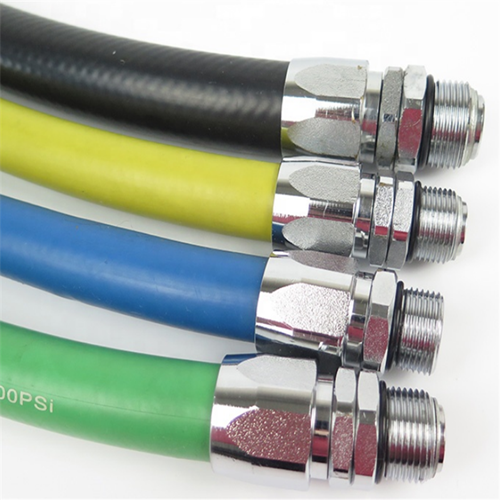335345435
dec . 01, 2024 05:42 Back to list
Hydraulic Hose Connection Fittings for Enhanced Performance and Durability in Fluid Systems
Understanding Hydraulic Hose End Fittings An Essential Component in Fluid Power Systems
Hydraulic hose end fittings are critical components in hydraulic systems, serving as the connection points between hoses and equipment. Their importance cannot be overstated, as they play a pivotal role in ensuring the entire hydraulic circuit operates effectively and safely. Understanding the types, functions, and specifications of these fittings is essential for anyone involved in fluid power systems.
What are Hydraulic Hose End Fittings?
Hydraulic hose end fittings are attachment points that connect hydraulic hoses to other hydraulic components such as pumps, valves, and actuators. These fittings are designed to create a secure and leak-free connection that can withstand high pressure and various environmental conditions. They come in various shapes, sizes, and materials, tailored to suit specific applications.
Types of Hydraulic Hose End Fittings
1. Crimped Fittings These are one of the most common types of fittings, characterized by their ability to form a strong mechanical bond with the hose through a crimping process. Metal ferrules are crimped around the hose and fitting, creating a solid connection able to handle high pressures.
2. Reusable Fittings As the name suggests, reusable fittings can be disassembled and reassembled. This feature makes them an excellent choice for maintenance and repair. These fittings are generally used in applications where hoses may need to be replaced frequently.
3. Screw-on Fittings These fittings utilize a threaded connection to attach the hose to the hydraulic component. They are easy to install and remove, making them a popular choice for various applications.
4. Swivel Fittings These fittings allow for rotational movement during operation, which can reduce hose wear and facilitate installation in constrained spaces. Swivel fittings are commonly used in applications where the orientation of the hose changes frequently.
Key Considerations When Selecting Hose End Fittings
hydraulic hose end fittings

When choosing hydraulic hose end fittings, several factors must be considered to ensure optimal performance within the hydraulic system
- Pressure Rating Hose fittings must be able to withstand the working pressure of the hydraulic system. Always choose fittings that exceed the maximum pressure your system will encounter.
- Compatibility Ensure that the fitting is compatible with both the hose material and the hydraulic fluid being used. This is particularly important in avoiding chemical reactions that could compromise the integrity of the fitting or hose.
- Size and Thread Type The size and thread type of the fitting must match the hose and the component to which it is being connected. Common standards include NPT (National Pipe Thread), JIC (Joint Industry Council), and SAE (Society of Automotive Engineers) threads.
- Material The choice of material for the fittings is crucial. Common materials include steel, stainless steel, and brass. The material should be selected based on the operating environment and the type of fluids being carried.
Maintenance and Inspection
Regular inspection and maintenance of hydraulic hose end fittings are essential to ensure their longevity and to prevent leaks that can lead to system failures. Check for any signs of wear, such as cracks, corrosion, or looseness in the fittings. It is advisable to replace any damaged or worn fittings immediately to maintain system integrity.
In addition, proper torque specifications should be adhered to during installation to ensure a secure connection without damaging the fitting or hose. Over-tightening can lead to stripping threads or damaging seals, while under-tightening can result in leaks.
Conclusion
Hydraulic hose end fittings are more than just connecting components; they are vital to the overall performance and safety of hydraulic systems. By understanding the types of fittings available and the factors to consider when selecting and maintaining them, professionals can ensure efficient operation across various applications. As technology advances, future developments in materials and designs promise to enhance the reliability and functionality of these essential fittings, continuing to support the fluid power industry effectively.
-
SAE 100 R17 Black Smooth Cover Hydraulic Hose
NewsMar.07,2025
-
SAE 100 R17 Black Smooth Cover Hydraulic Hose
NewsMar.07,2025
-
SAE 100 R17 Black Smooth Cover Hydraulic Hose
NewsMar.07,2025
-
SAE 100 R17 Black Smooth Cover Hydraulic Hose
NewsMar.07,2025
-
SAE 100 R17 Black Smooth Cover Hydraulic Hose
NewsMar.07,2025
-
steel wire braided hydraulic hose
NewsMar.07,2025



